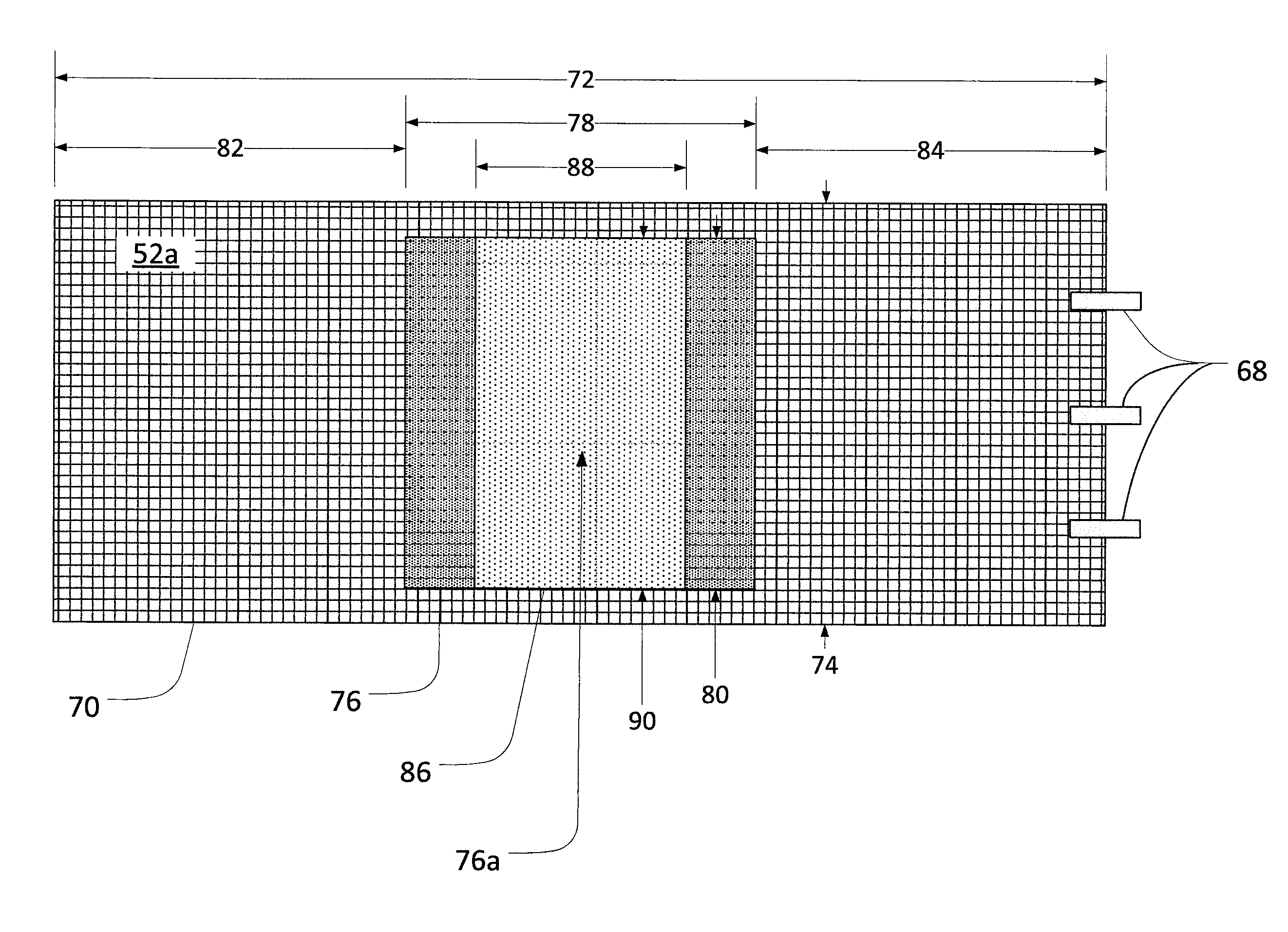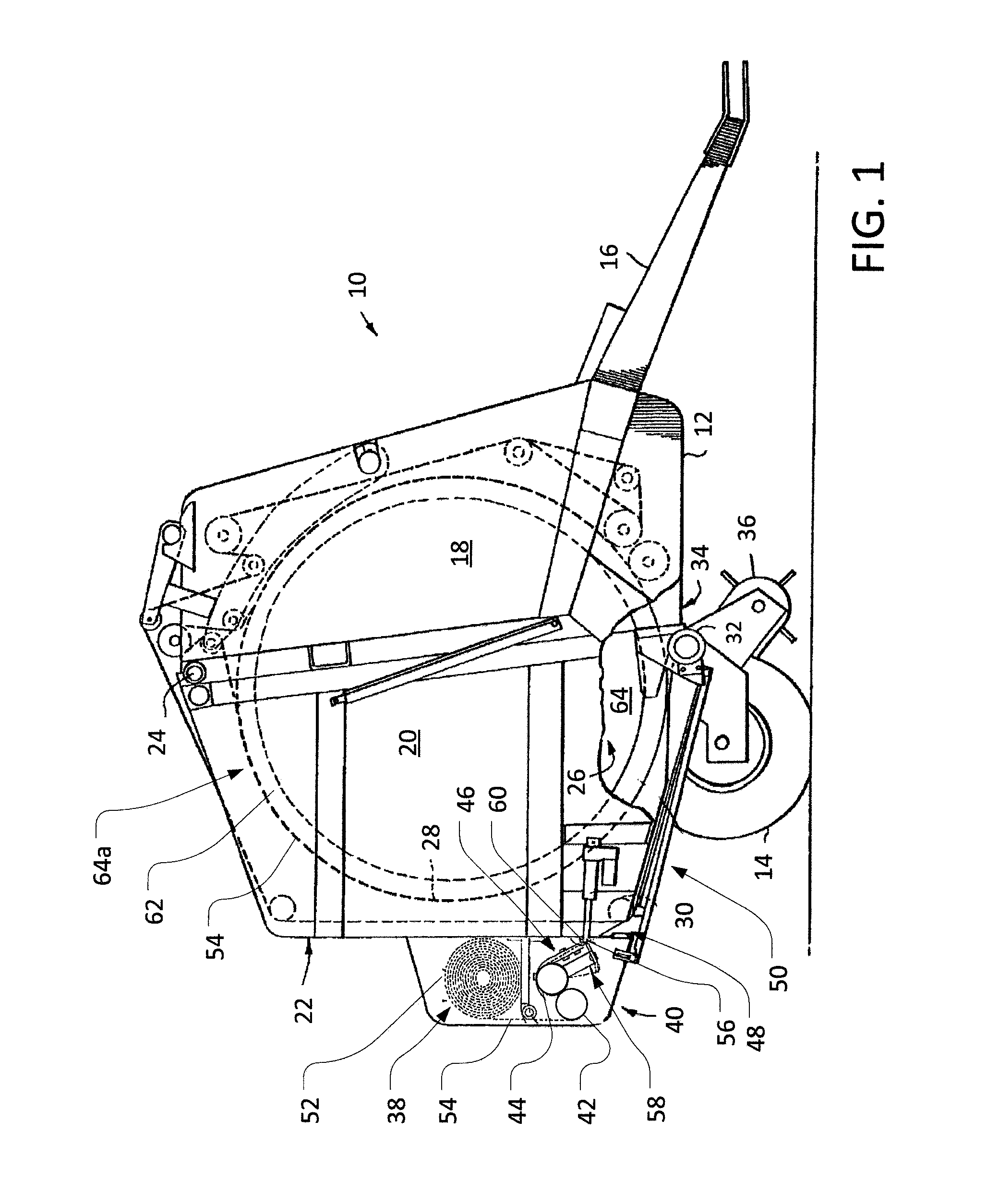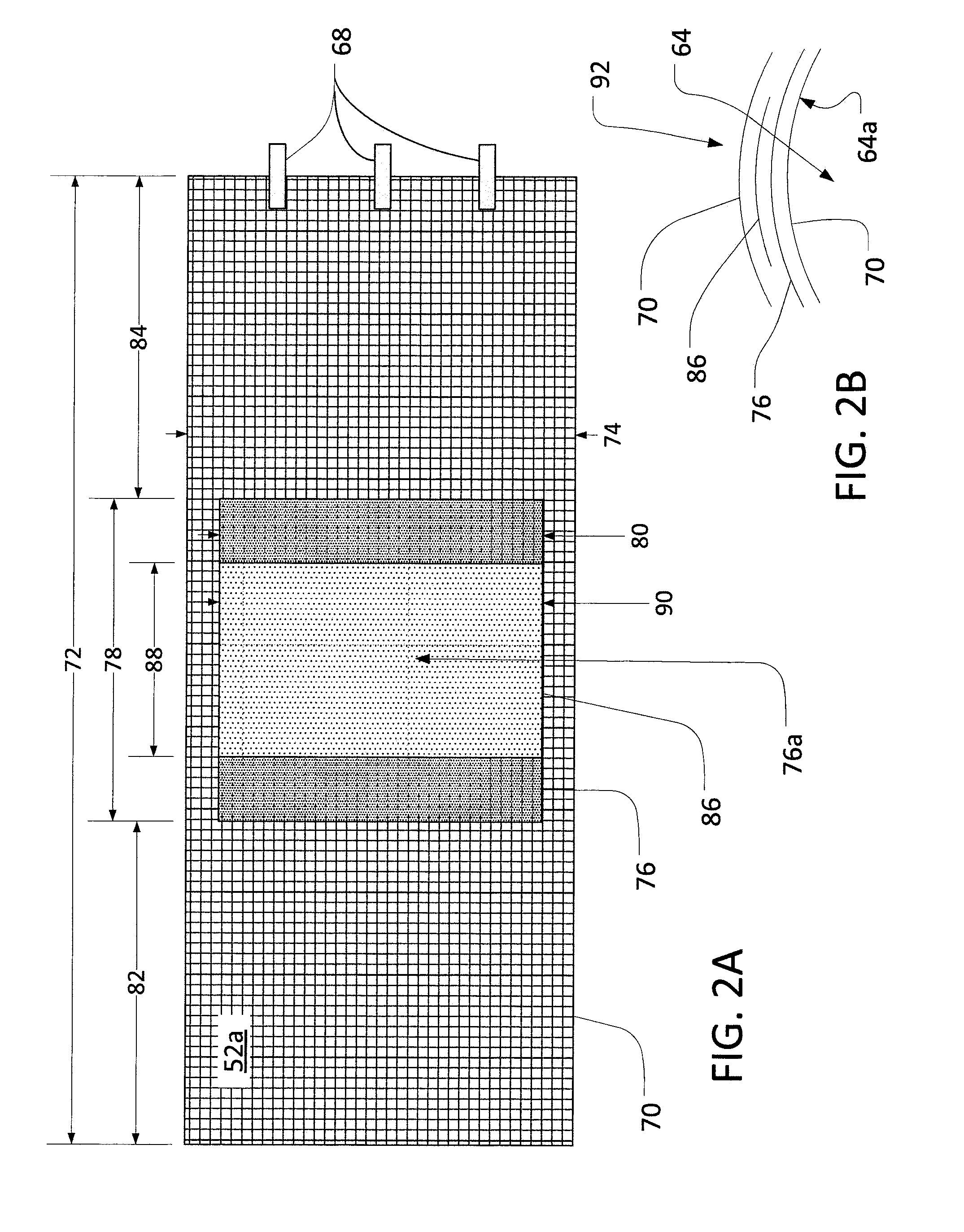Composite wrap material with overlapping segments
- Summary
- Abstract
- Description
- Claims
- Application Information
AI Technical Summary
Benefits of technology
Problems solved by technology
Method used
Image
Examples
Embodiment Construction
[0023]The following describes one or more example implementations of the disclosed composite wrap material, as shown in the accompanying figures of the drawings described briefly above.
[0024]As used herein, the “length” of a segment of wrap material may refer to the dimension of the wrap material in the direction of wrapping. For example, for a segment of wrap material that is rolled around a circumference of a round bale, the “length” of the segment may refer to the dimension of the segment that extends along the circumference of the bale. In contrast, the “width” of a segment of wrap material may refer to the dimension of the wrap material that is transverse to the direction of wrapping (or to the segment length). For example, for a segment of wrap material that is rolled around a circumference of a round bale, the “width” of the segment may refer to the dimension of the segment that extends axially along the outer surface of the bale (i.e., transverse to the circumference of the ...
PUM
| Property | Measurement | Unit |
|---|---|---|
| Length | aaaaa | aaaaa |
| Width | aaaaa | aaaaa |
| Permeability | aaaaa | aaaaa |
Abstract
Description
Claims
Application Information
 Login to View More
Login to View More - R&D
- Intellectual Property
- Life Sciences
- Materials
- Tech Scout
- Unparalleled Data Quality
- Higher Quality Content
- 60% Fewer Hallucinations
Browse by: Latest US Patents, China's latest patents, Technical Efficacy Thesaurus, Application Domain, Technology Topic, Popular Technical Reports.
© 2025 PatSnap. All rights reserved.Legal|Privacy policy|Modern Slavery Act Transparency Statement|Sitemap|About US| Contact US: help@patsnap.com



